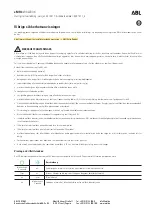
This shows the temperature of the
engine’s coolant. During normal
operation, the pointer should rise
from the bottom white mark to about
the middle of the gauge. In severe
driving conditions, such as very hot
weather or a long period of uphill
driving, the pointer may rise to the
upper white zone. If it reaches the
red (Hot) mark, pull safely to the
side of the road. Turn to page
for
instructions and precautions on
checking the engine’s cooling
system.
The temperature sensor is located in
the front bumper. Therefore, the
temperature reading can be affected
by heat reflection from the road sur-
face, engine heat, and the exhaust
from the surrounding traffic. This
can cause the temperature reading
not to be correct when your speed is
under 19 mph (30 km/h).
This shows how much fuel you have.
It is most accurate when the vehicle
is on level ground. It may show
slightly more or less than the actual
amount when you are driving on
curvy or hilly roads.
The needle returns to the bottom
after you turn off the ignition. The
gauge shows the fuel level reading
immediately after you turn the
ignition switch back ON (II).
When the outside temperature goes
down below 37°F (3°C) the first
time, the temperature reading blinks
about ten times to show you the
outside temperature is low. In certain
weather conditions, temperature
readings near freezing 32°F (0°C)
could mean that ice is forming on the
road surface.
323
Temperature Gauge
Fuel Gauge
Gauges
Instruments and Controls
74
Avoid driving with an extremely low
f uel level. Running out of f uel could
cause the engine to misf ire, damaging
the catalytic converter.
02/07/24 14:37:03 31S9A610 0079
















































